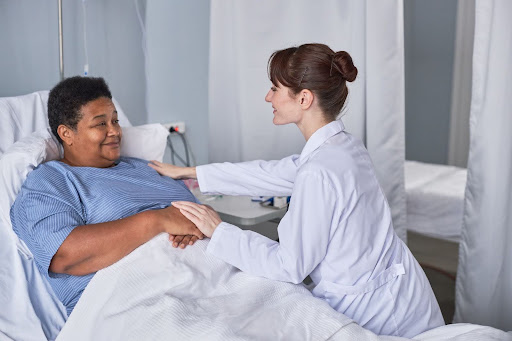
Signs of a Stroke: What Women Need to Know
Strokes are one of the leading causes of death in women in the United States of America. In 2019, strokes were third on that list and women made up nearly 60% of all stroke deaths.
Women differ from men in not only rates of death from stroke but also in risk factors and symptoms. As a result, many women do not know about the signs and symptoms they should look out for, and unfortunately, this can mean that there are delays when diagnosing and treating strokes in women. Many strokes are also preventable, so it’s important to understand them entirely: what they are, their risk factors, and prevention strategies, of course, if a stroke does occur, it’s crucial to know how to recognize it and take action.
What is a Stroke?
Strokes happen when blood can’t get to all parts of the brain, and as a result, brain cells are starved of oxygen and nutrients. There are two types of stroke: hemorrhagic and ischemic.
Hemorrhagic Stroke
A hemorrhagic stroke occurs when a weakened vessel ruptures and bleeds into the brain, accumulating and then compressing the brain tissue.
Hemorrhagic strokes can be broken into two further types: intracerebral hemorrhage and subarachnoid hemorrhage. An intracerebral hemorrhage occurs within the brain, while a subarachnoid hemorrhage occurs between the inner and outer layers of the tissue covering the brain.
Ischaemic Stroke
Ischaemic strokes occur when a blood clot blocks an artery that leads to the brain, blocking the flow of blood and oxygen to the brain.
Stroke Symptoms for Women
Men and women do experience some of the same stroke symptoms, these include:
- A sudden numbness and weakness in the face, arm, or leg, especially on one side of the body
- A sense of confusion or trouble speaking
- Trouble seeing in one or both eyes
- Trouble walking and loss of balance or coordination
- Severe headache
Women may also experience:
- Hiccups
- Chest pain
- Fatigue
- Nausea
- Racing heart
- Shortness of breath
When it comes to understanding the risk of stroke and if you may be experiencing one, the key telling point is the ‘suddenness’ of the symptoms. This is the best way to speculate and then seek help through talking to a healthcare professional.
Risk Factors for Women
The following can mean a higher risk of stroke for women:
- High blood pressure
- Pregnancy
- Taking some types of oral contraceptive pill
- A type of irregular heartbeat called ‘Atrial Fibrillation.’
- Some migraines
In these lists, having high blood pressure is the highest preventable cause of stroke. For women, during pregnancy, there is an increased risk of having a high blood pressure condition called preeclampsia.
It’s important to continually monitor your health, particularly if any of these risk factors apply to you. Doctors are not the only ones who can help protect your health in this way, nurse practitioners who hold the requisite qualifications such as an online DNP program can help too.
What to Do if You Suspect You’re Having a Stroke
If for any reason you suspect you are having a stroke, seek immediate medical attention. The symptoms of stroke in women can often be brushed off as other things, and this can mean a delay in diagnosis and therefore a delay in treatment. This can be incredibly dangerous, and even deadly. For this reason, it’s always best to seek professional help.
Remember the symptoms above, and keep the acronym ‘F.A.S.T’ in mind when trying to spot a stroke:
F- Face
Does one side of the face droop down? Is the person’s smile uneven?
A- Arms
Can both arms be raised? Does one drift down?
S- Speech
Is speech slurred at all?
T- Time
Remember that time is limited and it’s crucial to get medical help ASAP. Note the time that symptoms started and call 911 or your local emergency number right away. If you are monitoring someone who you believe is having a stroke, monitor them closely and do not leave them until they have emergency help.
Unfortunately, strokes are very common, and women can be disproportionately affected. Staying on top of your health and monitoring blood pressure levels, especially if you are a pregnant woman or have other risk factors, is the easiest way to monitor your risk of stroke. Make an effort to remember the symptoms, the F.A.S.T acronym, and know what to do when the stroke occurs. It might just save your, or someone else’s, life.

Comments (0)